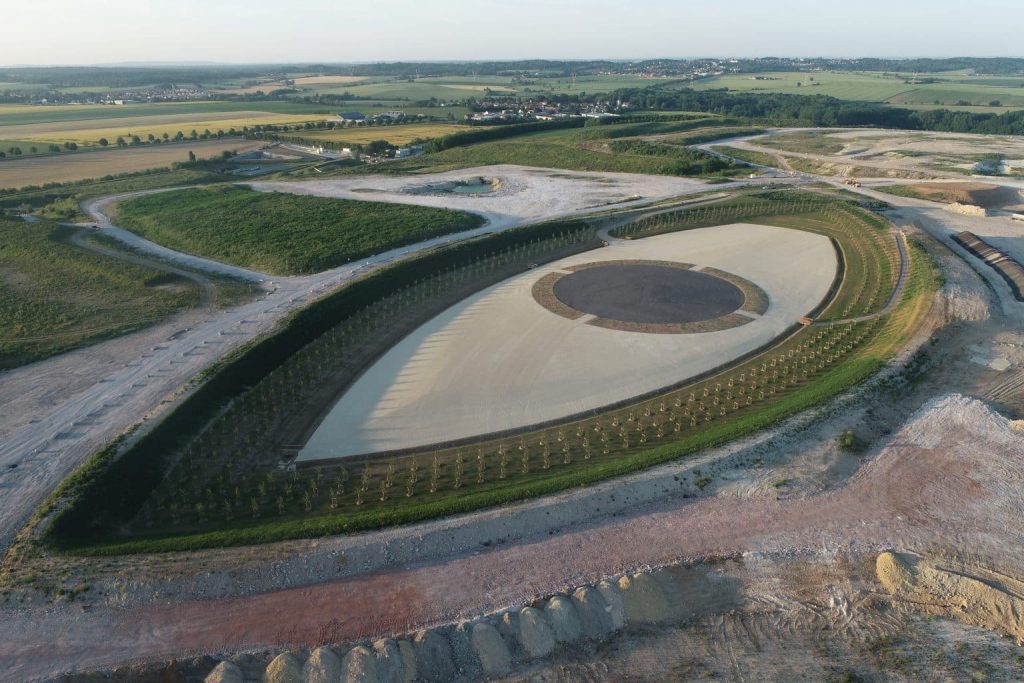ECT AND ANTOINE GRUMBACH: SOIL, LAND ART, LIFE!
The Eye in the Sky, a work of land art by Antoine Grumbach on the ECT site in Villeneuve-sous-Dammartin
Presentation of the project
On its largest site for the reuse and recovery of excavated earth, ECT wanted to create something truly exceptional: a park open to everyone. Grumbach, who is an architect and artist, came up with two 400-meter-long eyes: The Eyes in the Sky. The West Eye is now complete and can be seen from aircraft at the nearby Paris Charles de Gaulle Airport.
Key figures
- June 2022 : Start of the earthworks
- 1,103 trees
- 12,000 plants
- March 2023 : End of the works and planting
- 400 meters long
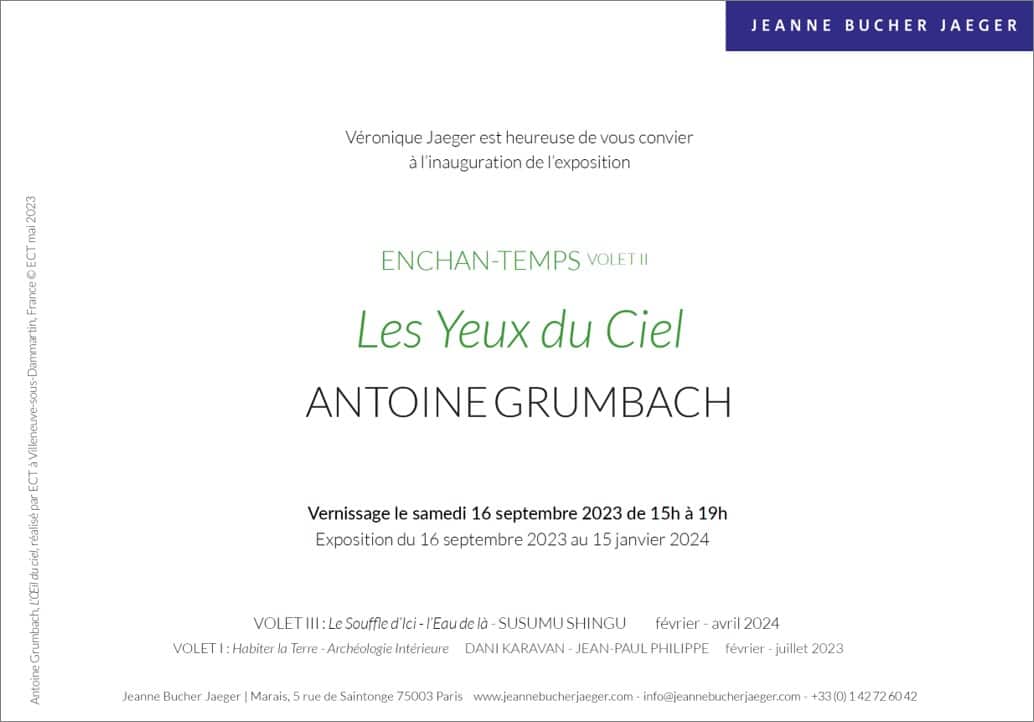
Exhibition by Antoine Grumbach, The Eyes in the Sky at the Jeanne Bucher Jaeger Gallery – Paris
Véronique Jaeger is delighted to announce the second instalment of the annual ENCHAN-TEMPS cycle, the exhibition entitled The Eyes in the Sky devoted to the artist and architect Antoine Grumbach.
The gallery will be showing the raw earth and marble model-sculptures brought to life by their painted azulejo eyes, produced by Viúva Lamego in Portugal, as well as the drawings, photographs and films of this huge eponymous work on the scale of Greater Paris.
Teaser for the film L’Oeil du Ciel
The Eye in the Sky : understanding the origins and making of this breathtaking project
In this 15-minute video, Grumbach explains how to design a work of art on the scale of Greater Paris. Laurent Mogno, chair of ECT, situates the Villeneuve site and The Eye in the Sky in the context of the circular economy of excavated soil to be reused for local benefit. Jean-Baptiste Gautier, who farms the site, brings back art to farmland. Meanwhile, construction machinery digs and shapes the Eye, and gardeners help it take shape.
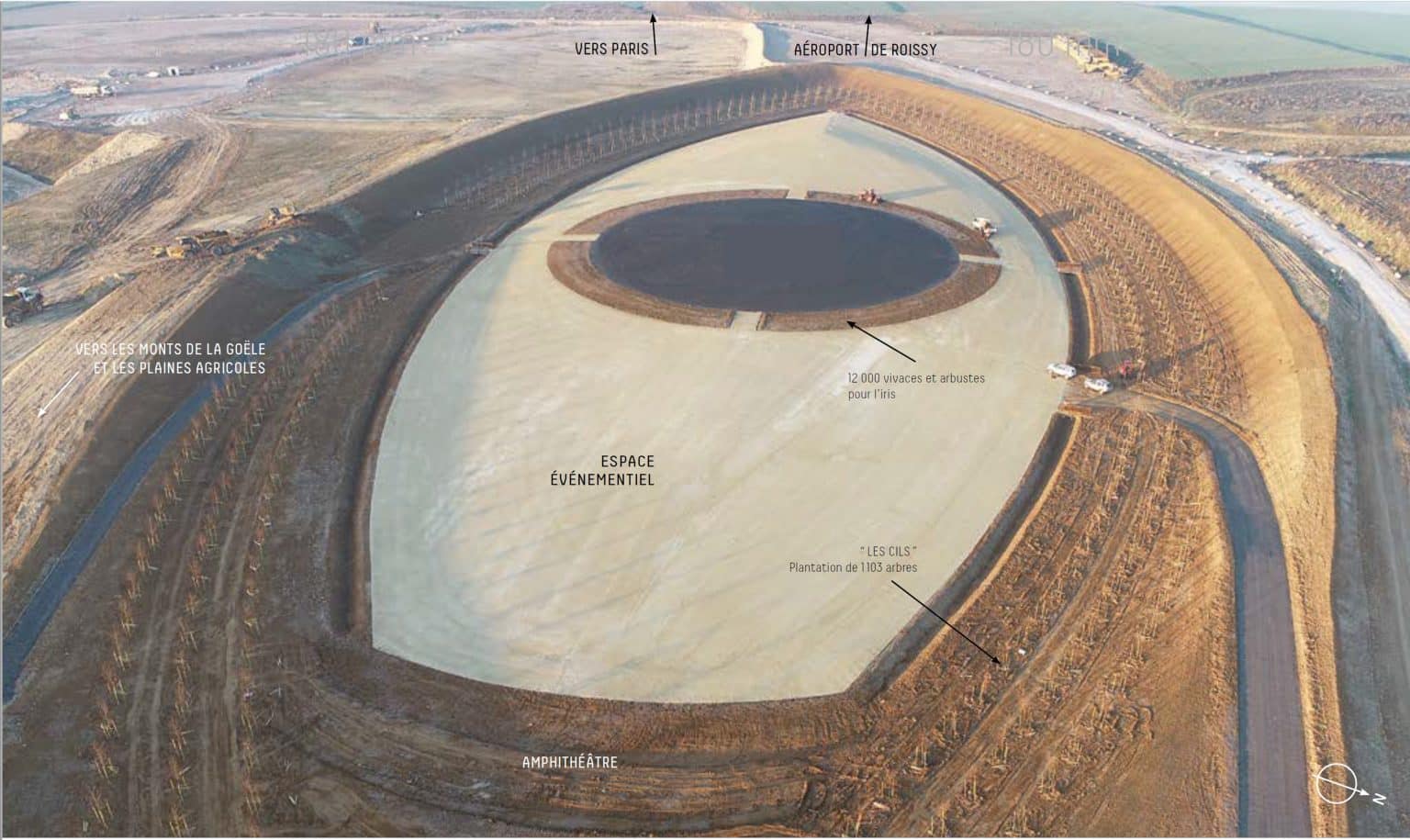
L'Oeil du Ciel by Antoine Grumbach and ECT - March 2023
The Eye wide open
“I can see the eye of whoever can see my eye.”
The 400-meter-long Eye is bordered by tree plantings. The boundaries are planted on a mound with grassy terraces. Today, it is part of a site for recycling excavated earth which is still in use. Once it opens to the public, it will eventually become an events venue and a park to walk around in and enjoy.
Work on the West Eye was completed in March 2023.
Work on the East Eye will begin in 2025.
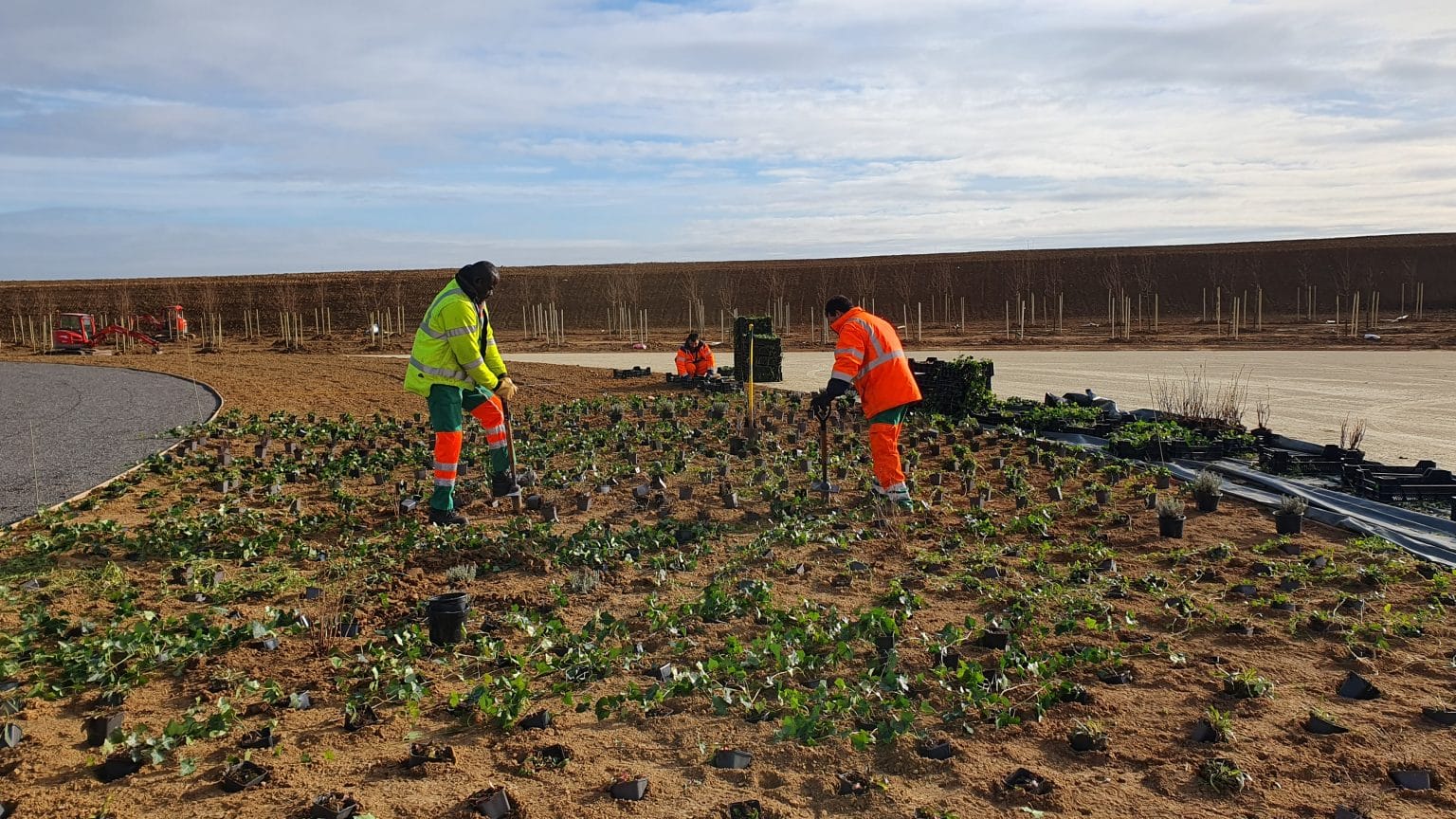
Plantations of the West Eye pupil - Villeneuve-sous-Dammartin (77)
1,000 trees and 12,000 plants
to design the Eye in the Sky
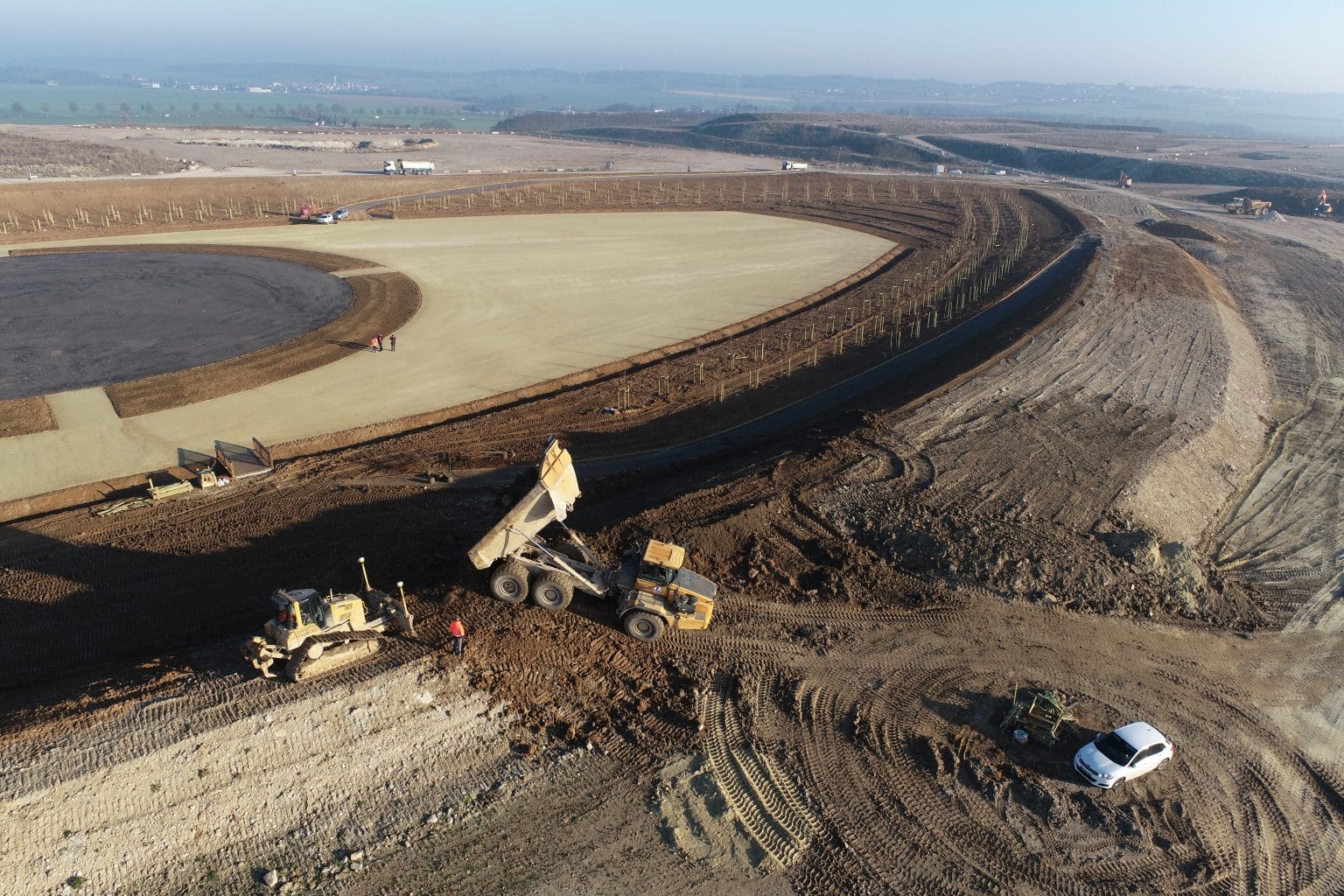
Landscaping of the Oeil du Ciel
Works period : from June 2022 to March 2023
Stages of the works in six dates:
- June 2022 | Start of the works and laying of the lower layer of silt.
- August 2022 | Modelling of the shape of the eye using inert materials and earth.
- September 2022 | Excavation of the tree pits and covering with topsoil.
- October 2022 | Treatment of the silt sub-layer.
- November 2022 | Completion of the earthworks and laying of the top layer.
- February 2023 | Planting of the iris by schoolchildren from Mesnil-Amelot and Villeneuve-sous-Dammartin.
Design : Antoine Grumbach | AG Territoires
Client : ECT
Project management : Roland – Eiffage
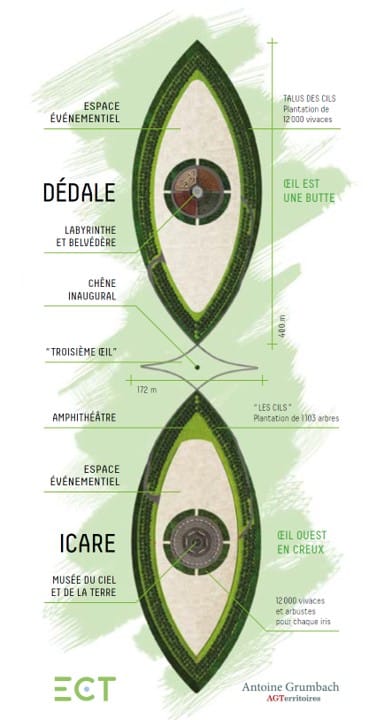
Sketch of Les Yeux du Ciel
The design of an iconic work : Antoine Grumbach’s The Eyes in the Sky
ECT commissioned Grumbach to create a work of art celebrating the land on construction sites in the Paris region.
A large-scale work of art
This work of aerial art is on display for the millions of travelers who pass through Paris Charles de Gaulle Airport every year. It has become a lookout in the sky, watched by planes from all over the world. With air travel becoming commonplace in the 21st century, the history of geoglyphs – gigantic motifs turned towards the sky – is being revisited. Whether landing or taking off, plane passengers will meet the gaze of two wide-open eyes welcoming them or bidding them farewell to the Paris Region.
A metropolitan park in the north of Seine-et-Marne
By 2030 at the latest, the arrival at Mesnil-Amelot (1.5 km from the site) of the Paris Métro Line 17 terminal of the Grand Paris Express will transform the urban environment. The Eyes in the Sky will create a nearby area combining farming and leisure activities, in a new form of regional park. Eventually open to the public, this park will evolve according to initiatives. For each season, the space will host sporting events and themed and environmental events along with flower shows.
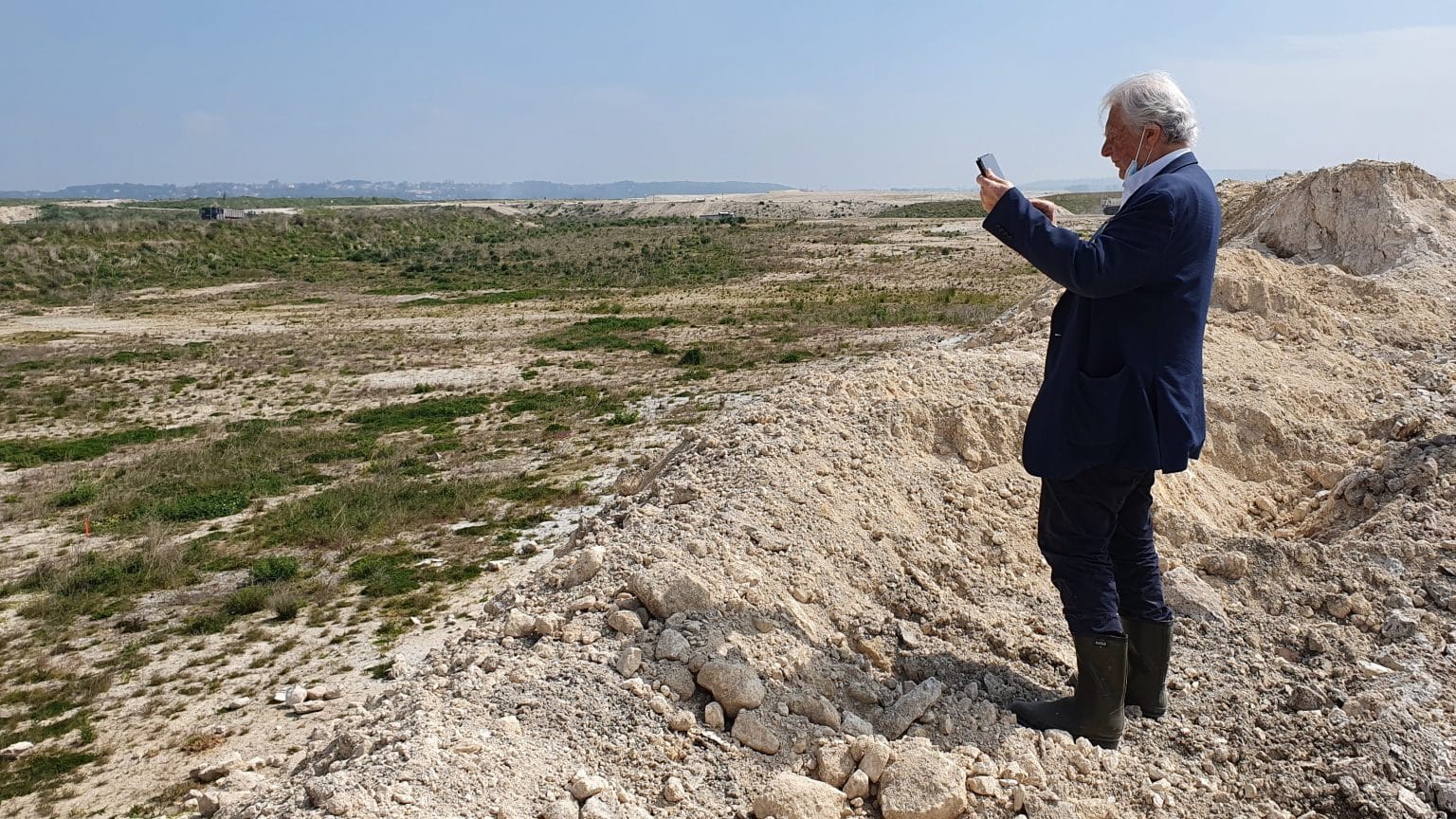
Antoine Grumbach on the Villeneuve-sous-Dammartin site in 2022
About Antoine Grumbach
Antoine Grumbach (1942) is an artist and urban designer. He graduated from the Ecole des Beaux-arts in 1967 and was awarded the Grand Prix national d’urbanisme et d’art urbain in 1992.
His many international achievements and major architectural and urban planning projects include the Cours Mirabeau in Aix-en-Provence, the habitable Thames bridge in London, the restructuring of the historic district of Shanghai, Greater Moscow, the Paris tramway and the Greater Paris “Seine Métropole” urban community.
For decades, his work on Greater Paris and Greater Moscow has provided a meaningful insight into the ongoing construction of cities and the link between cities and natural habitats. His extensive experience as an architect and urban designer made him realize that by 2050, most of the world’s inhabitants will be living in metropolises, and that it is essential to incorporate natural areas into them.
As metropolises are inseparable from the earth that sustains them, Grumbach has taken a particular interest in urban flows. This includes soil from construction excavations. In the Greater Paris region, this amounts to 20 million tons a year. For the artist and designer, this soil is a useful material for creating landscapes in the Anthropocene epoch.
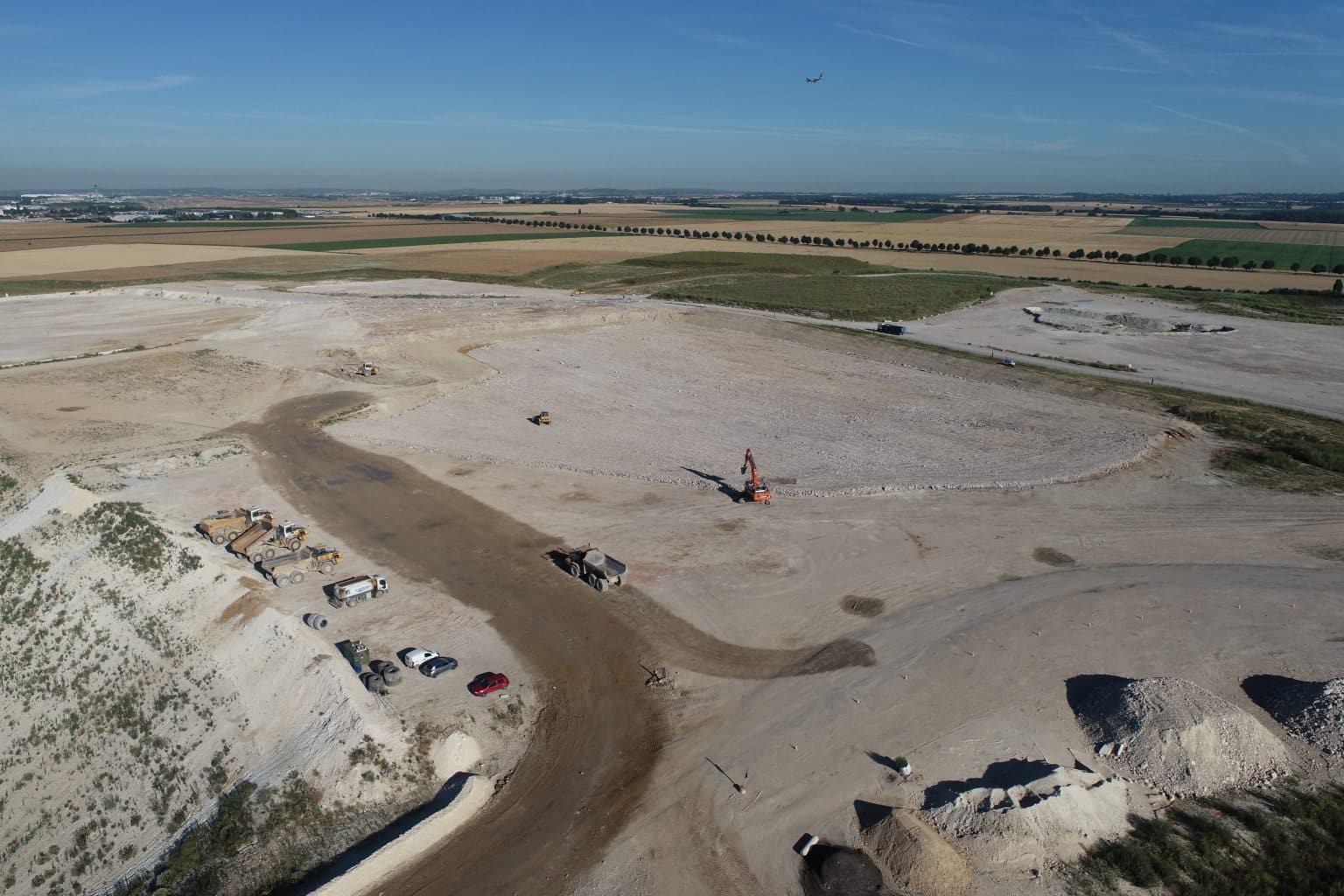
"The Eyes of the Sky", a work by Antoine Grumbach / ECT
An outstanding site for recycling excavated soil : Villeneuve-sous-Dammartin in Seine-et-Marne
In the Montgé-en-Goële area, between Villeneuve-sous-Dammartin and Le Mesnil-Amelot along the D401, the ECT site extends over an area of 191 hectares, and is over 1.2 kilometers long and wide. It is currently the largest excavated soil recovery site in the Greater Paris region, receiving soil from all the construction sites in the Paris region.
The site is unique in that it is located alongside the Paris Charles de Gaulle Airport runways, on a 191-hectare plateau of land 30 meters high, between farmland and airport sites.
As a comparison, in Paris, the site would cover an area stretching from the Cour Carrée of the Louvre to the Place de la Concorde and from the left bank to the Palais-Royal. The site has always been used for agricultural purposes.
The north-western slopes, completed in 2005, are home to a wood reclaimed by abundant wildlife, a large apple orchard and beehives. Located next to the runways of Paris Charles de Gaulle Airport, the site is directly overflown by planes landing on or taking off from the runways of the northern runways.
The project "The Belvederes of Greater Paris" combines art, landscaping and 'circular economy'.
(Circular economics use maximum recycling with the minimum addition of raw materials, water and energy, unlike the extraction-manufacture-consumption-disposal model of linear economics.)
"The Eyes of the Sky" is only of of many projects planned for the collaboration between ECT and Antoine Grumbach, within the ambitious framework of "The Belvederes of Greater Paris".
These belvederes or lookout points will continue to celebrate the diversity of the landscapes of the Paris Basin. They involve the creation and shaping of new "made hills". The entire set of these hills around Paris will be an archipelago of metropolitan land art.
Antoine Grumbach : "The volume of inert soil from sites in the Île-de-France region is about 10 million cubic metres per year. That's the equivalent of four Great Pyramids of Giza (2.5 million m3). Until now, this has not produced any artistic or cultural creation on the same scale."
Each hill will be an area where visitors can walk surrounded by nature with, at the summit, a lookout point and an orientation table. Other developments and facilities might include an amphitheatre; areas for relaxing, walks or reading; a gloriette or single-storey folly; hanging gardens; or an open-air museum. Visitor facilites will include separate parking for coaches, cars and bicycles. Local people and tourists alike will be able to enjoy a place for walks, leisure and discovering the panoramas of the Île-de-France.
The total number of artificial hills is not yet fixed - there may be nine, ten or twelve. They will be placed in a circle with a radius of 20 miles from the centre of Paris. The sites may be derelict or sensitive land, industrial brownfield sites or inaccessible former quarries. These Belvederes will thus be at the boundary between the urban area and the landscape of agriculture and forestry.
Antoine Grumbach says, "This set of Land Art works will thus highlight, on the scale of the Île-de-France region, the spectacle of the outer edge of urbanisation at the start of the 21st century."
The Belvederes Walk: An invitation to different landscapes.
A. Grumbach: In the 19th century, Haussmann and Alphand created "The Paris Walks". Now at the beginning of the 21st century, the Belvederes Walk will embody discovery of the variety of surprising landscapes that link the city with nature at the outer edge of the Parisian conurbation.
All visitors will find something for them, whatever their sports or cultural interests. A great metropolitan footpath will connect all the Belvederes in a 125-mile itinerary. This walk will invite visitors to consider the transformation of the regions and the fragility of their boundaries.
Also, climbing these hills will take the visitor to a collection of architectural structures, each one different. For example a gloriette (an outward looking single-storey folly), a tempietto (a little temple or tholos), a cabin, etc; and an orientation table to show where the soil came from.
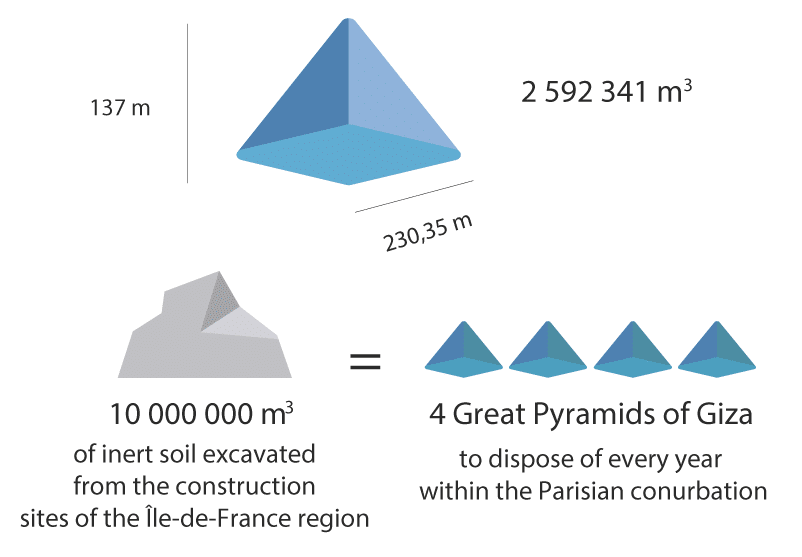
10,000,000 m3 of excavated soil = 4 Great Pyramids of Giza
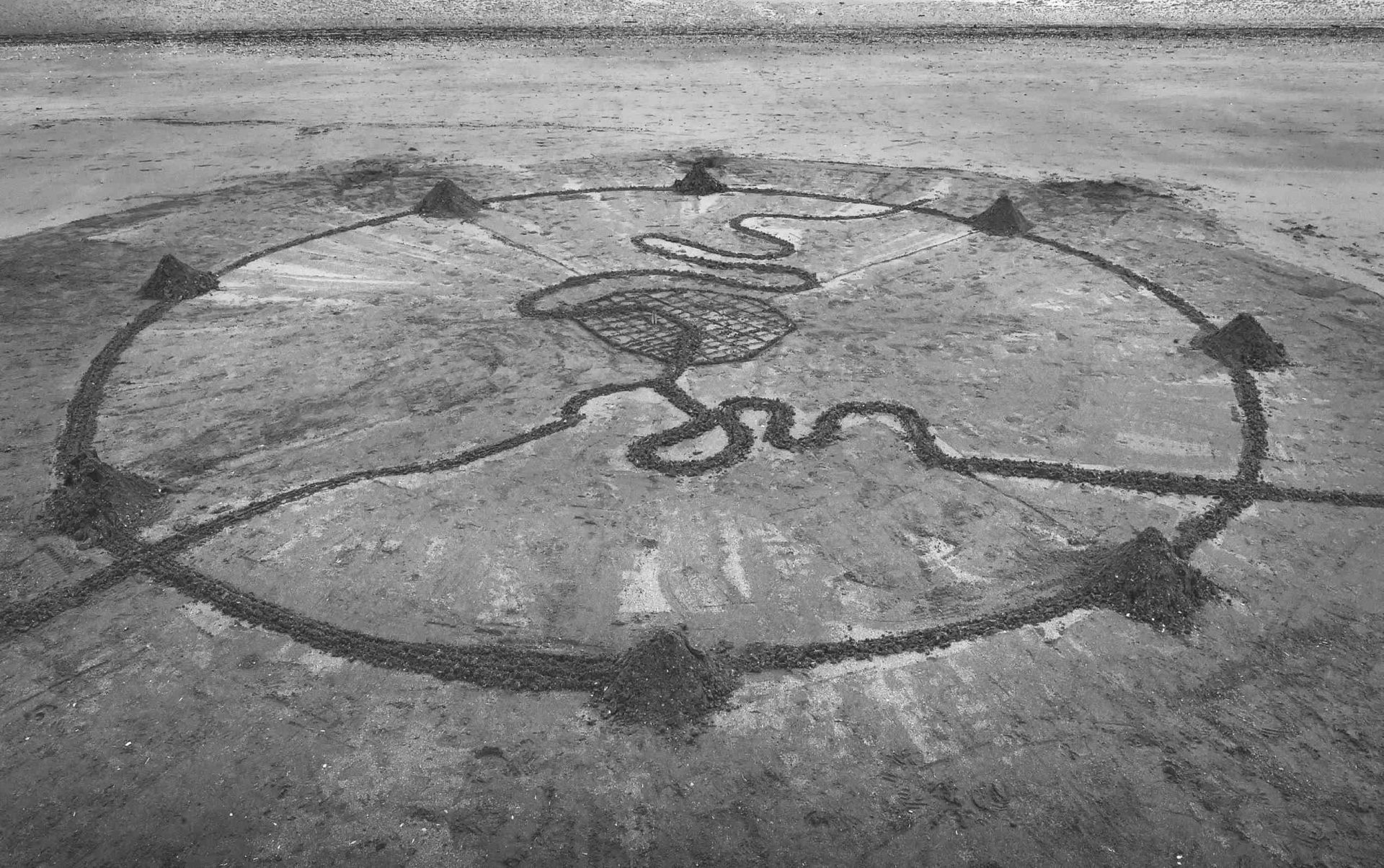
The Belvederes project unites the Land Art of the landscape artist with the dynamic recycling of excavated soil. It will celebrate a kind of metropolitan identity for the 21st century that combines 'circular industry', ecology and cultural identity.
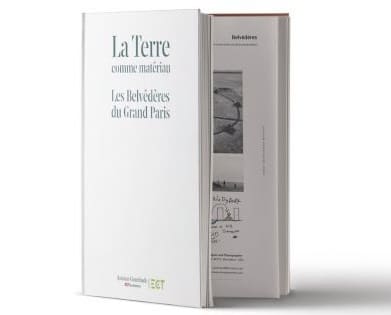
Book by A. Grumbach - "La Terre comme Matériau: les Belvédères du Grand Paris"
In his book "La Terre comme Matériau" or "Earth as a Raw Material", Antoine Grumbach retraces the path (one of intellectual development, awareness and art) that led him to consider excavated soil as a material, that of the Belvederes of Greater Paris.
